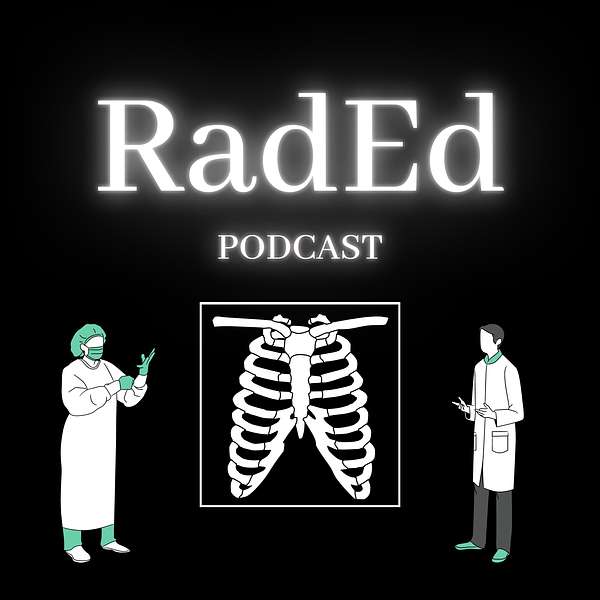
RadEd
This is a podcast about all things radiology designed for medical students, residents, attending radiologists, and anyone else interested! The goal of this podcast is to educate people on and explore the field of radiology. Topics covered include: diagnostic imaging modalities, important radiology concepts/findings, current research topics in the field, technologies and procedures of the field, social and ethical challenges, radiology as a career, interviews with radiologists, and much more!
RadEd
Imaging Modalities
- If this episode doesn't fascinate you, I don't know what will!!
- Radiographs
- Ionizing radiation hits a photosensitive film to produce an image
- Digital radiography: photosensitive plate processed by electronic reader to be stored digitally
- PACS system: picture archiving, communications, and storage system
- Plain films = X-ray = radiograph = without contrast material
- Advantages: availability, less expensive
- Disadvantages: limited detail, uses radiation (caution in pregnancy)
- Uses: chest x-ray, abdomen x-ray, bone visualization
- Densities
- Air is black (absorbs the least), bone is white (calcium), metal appears whitest, fat and soft tissues appear in between as gray
- CT scanners
- Uses x-ray machine that rotates around patient to create different planes and produce a large series of 2D images slices
- Important to understand positioning of patient from image (you're look up from the bottom of their feet, with patient's right on the left of the screen)
- Hounsfield units: -1000 to +1000, water is zero, air is -1000, bone is +400-600, fat is -40 to -100, soft tissues is 20-100
- Windowing: range of densities to most optimally view certain structures
- Advantages: greater detail
- Disadvantages: more radiation, more expensive
- Uses: non-contrast head CT for stroke, traumas, 3D reformats
- Ultrasound
- Uses high frequency sound waves emitted from a probe
- Advantages: less expensive, availability, no ionizing radiation
- Disadvantages: operator dependent, low resolution
- Uses: great for pregnancy, gallstones, breast masses, thyroid nodules
- Doppler flow: red towards probe, blue away from probe
- MRI
- Uses magnetic fields and radio waves to affect hydrogen items
- Advantages: great resolution, no radiation
- Disadvantages: expensive, time-consuming, special precautions (pacemakers)
- Uses: brain imaging (MS), soft tissues like muscles, tendons, ligaments, herniated discs, spinal cord pathologies
- Fluoroscopy
- Uses ionizing radiation in real-time
- Can give barium to a patient which will show up black
- Uses: esophagrams, voiding cystourethrograms, interventional radiology (angiography)
- Advantages: mobile, procedure guidance, dynamic
- Disadvantages: higher dose of radiation
- Nuclear medicine
- Uses radioactive substances (elements that emit radiation as they decay) and couples them with drugs that will accumulate in certain tissues
- Different types of scans: positron emission tomography (PET) scans use radioactive glucose (fluorodeoxyglucose, FDG), single photon emission computed tomography (SPECT) uses a gamma camera to acquire images from many angles to create a 3D map
- Different organs use different substances; the brain loves glucose and the thyroid loves iodine
- Uses: cancer imaging, assessing for metastases
- Less radiation than CT scans, but must use caution with radiation exposure via shielding and appropriate timing
References: Herring's Learning Radiology, Radiopaedia, Mandell's CORE Radiology